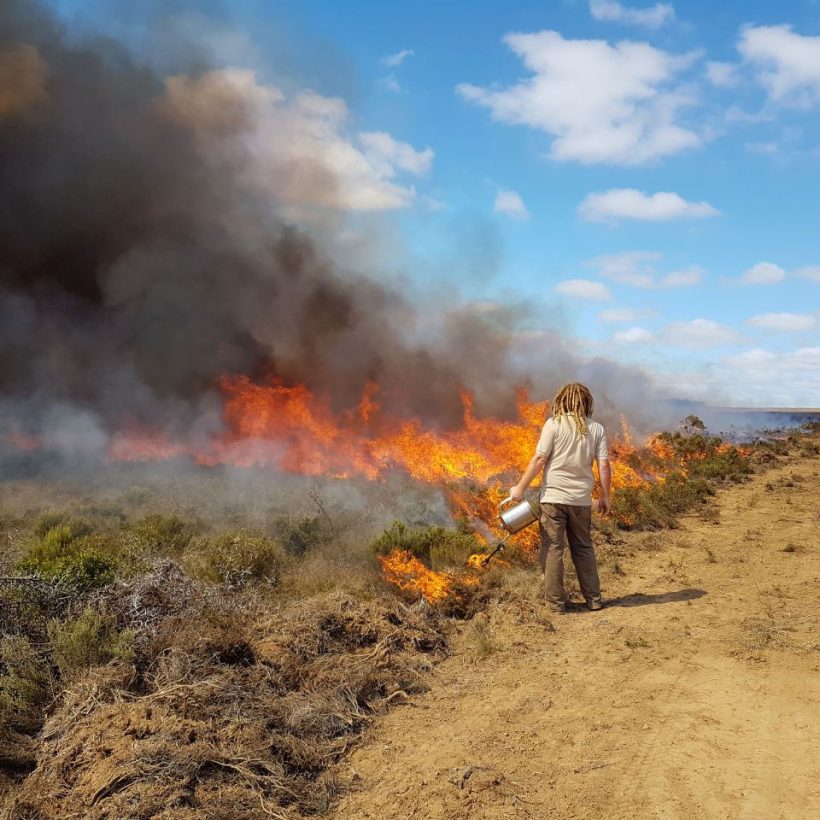One of the best management tools to ‘restore’ Renosterveld to its full potential from a biodiversity perspective is to utilise fire as a management tool when the veld age of the vegetation in a fragment has reached a moribund state (where it typically lacks vigour) due to the high woody component of the vegetation. Though fire has a huge impact on species within an ecosystem it is critical to include it within the management of natural systems in the Western Cape Province where the Cape Floristic Region has evolved with fire as an ecosystem driver.
Planning is critical to ensure that a mosaic of veld age is maintained with fragments in the ecosystem to provide habitat refuge to the variety of mammals, birds, insects and amphibians that utilise the fragments within the landscape. Also, it is important to burn within the late summer period as the ecosystem would have historically burnt at this time at the end of the long dry summer. Also, the bulbs are dormant below the soil surface and are protected from the flames. As ecological burns must take place in the fire season there is a risk from a safety perspective and the ORCT assists landowners to ensure that firebreak preparation and weather conditions are taken into consideration when implementing a burn to minimise risk to infrastructure while still achieving the desired ecological objective. Partnerships with the Greater Overberg Fire Protection Association and the Overberg District Municipality to ensure that we implement ecological burns to best conserve our critically endangered ecosystems.
An ecological burn has been implemented in the 2018 fire season at the Kinko Conservation Area in the Breede River Cluster. Fragments that were prioritised in the Integrated Management Plan were burnt in a mosaic pattern that will see all remnants burnt on the property over a six year period. This was the first burn on site in more than 30 years and we will the following fragments in two to three years.
A fantastic operation that included local farmers, WESCO Vegetation Management Services and the ORCT ensured that the burn went off successfully. Fragments will now be fenced to allow for grazing exclusion over the next two years and alien vegetation that may germinate will be prioritised for clearing. Of great excitement will be the spring botanical surveys conducted by Dr Odette Curtis-Scott and Jannie Groenewald that will assuredly add to the Kinko Conservation Area botanical species list with all the botanical gems that will respond to the ecologically required disturbance!



